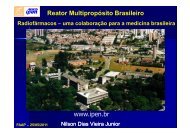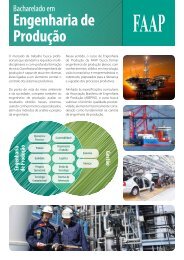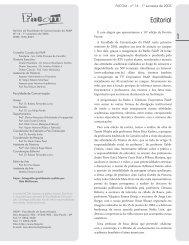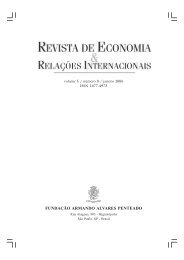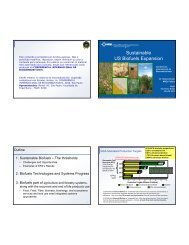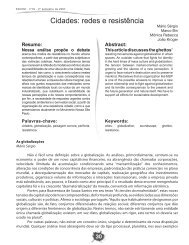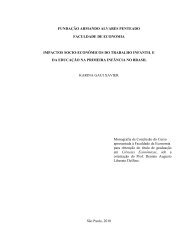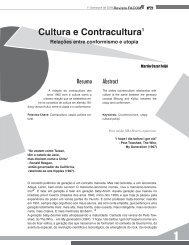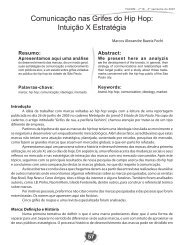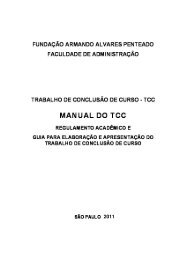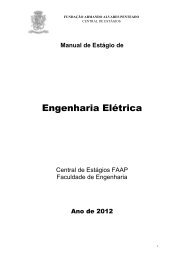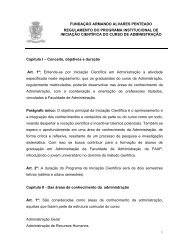Revista Estratégica vol.10 - Faap
Revista Estratégica vol.10 - Faap
Revista Estratégica vol.10 - Faap
You also want an ePaper? Increase the reach of your titles
YUMPU automatically turns print PDFs into web optimized ePapers that Google loves.
Topographic remodeling in fish culture aims to systematize the area by providing<br />
the conformation of tanks with varying dimensions. In Santa Maria Ceramics, 11 tanks<br />
were built and the walls were modeled with a maximum tilt of 45 degrees, with grassy<br />
borders to prevent landslides (Figure 2).<br />
The depths of the tanks vary on average from 1.5 m to 2.0 m and its floor and walls<br />
are properly compacted to prevent water loss through seepage. For topographic remodeling<br />
of the study area a track type tractor was used.<br />
Source: Made by the authors.<br />
30<br />
Figure 2 - Diagram of a fish tank<br />
The liming in the tanks was the first thing to be done and it was based on soil analysis<br />
of the tank. The objective was to bring the pH to 7.0 and get a base saturation around 70%.<br />
The amount of limestone used to correct acidity was 80 tons. Liming was carried out three<br />
months prior to the settlement. For fertilization, chicken manure was used (fully tanned) in<br />
the amount of 50 kg / ha and 160 kg / ha of bone flour. All the fertilizer was applied broadcast.<br />
The species used in the process of settlement were native species from the Amazon,<br />
prioritizing the use of those, thereby avoiding the cultivation of exotic species.<br />
Tambaqui (Colossoma macropomum)<br />
The choice of this species was made based mainly on biological qualities and adaptability<br />
to the regional culture, with decisive factors such as: fast growth, hardiness, resist-<br />
<strong>Estratégica</strong>, <strong>vol.10</strong>(02), dezembro.2010



